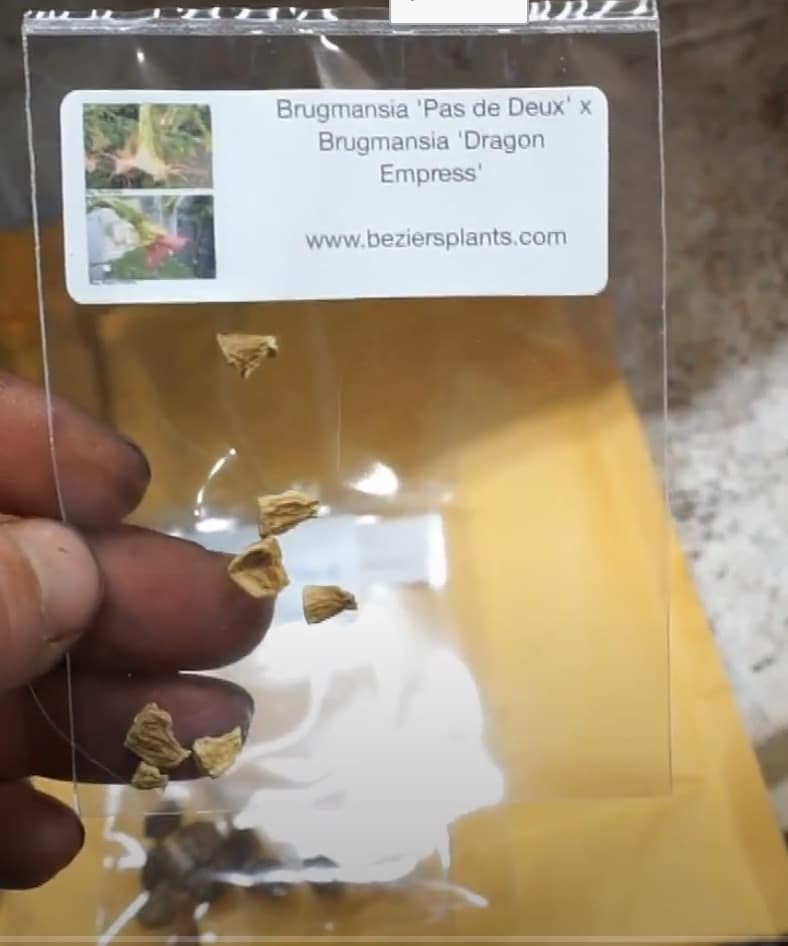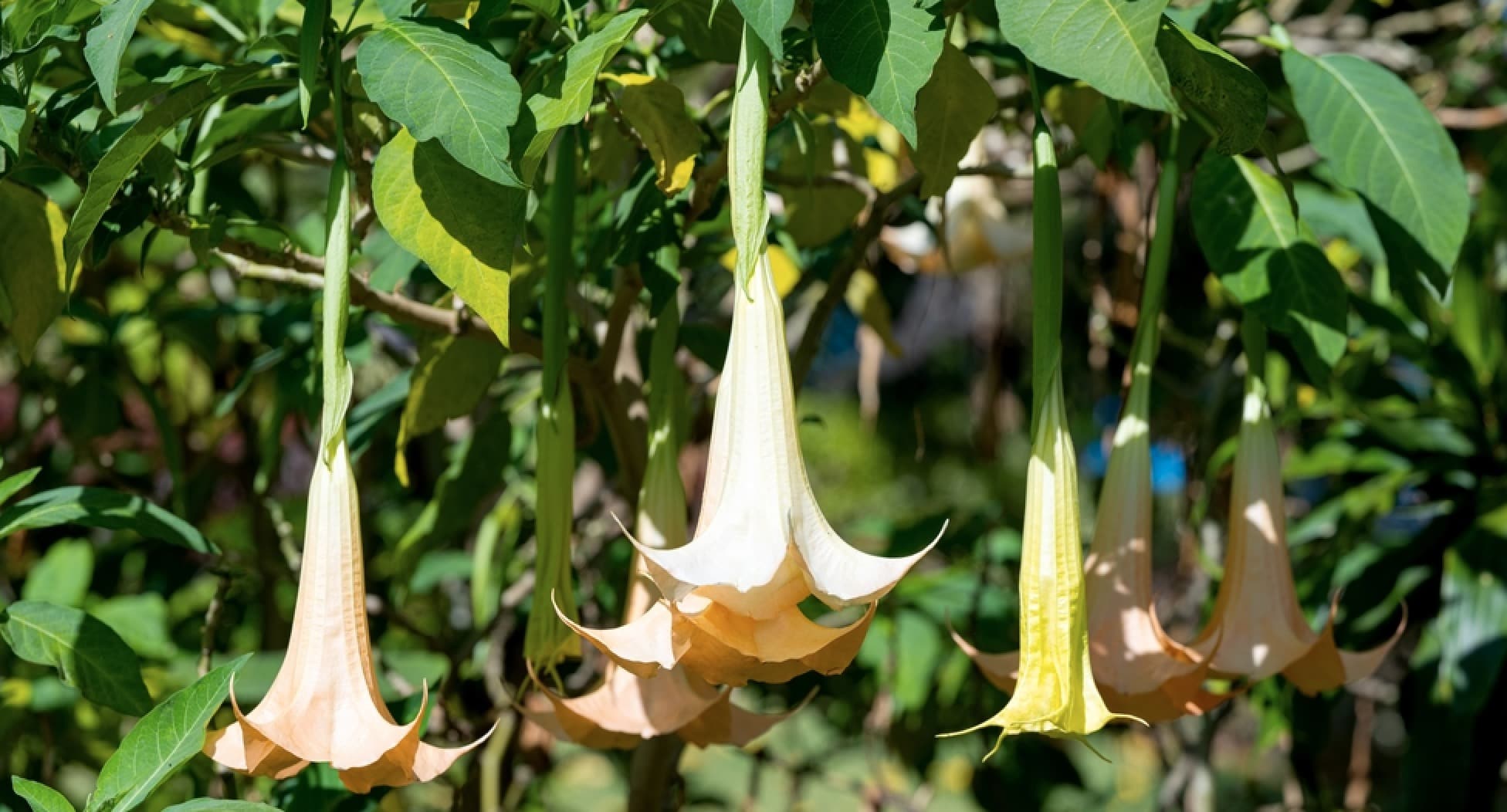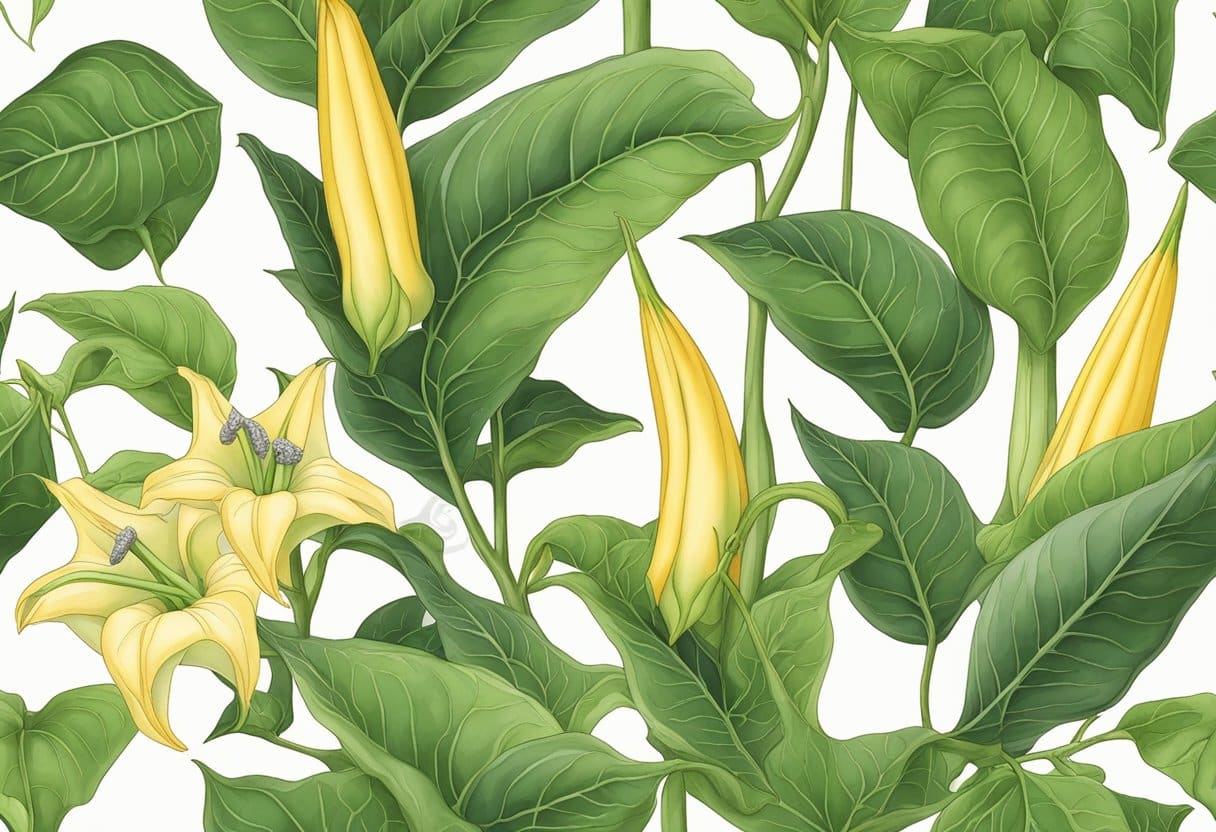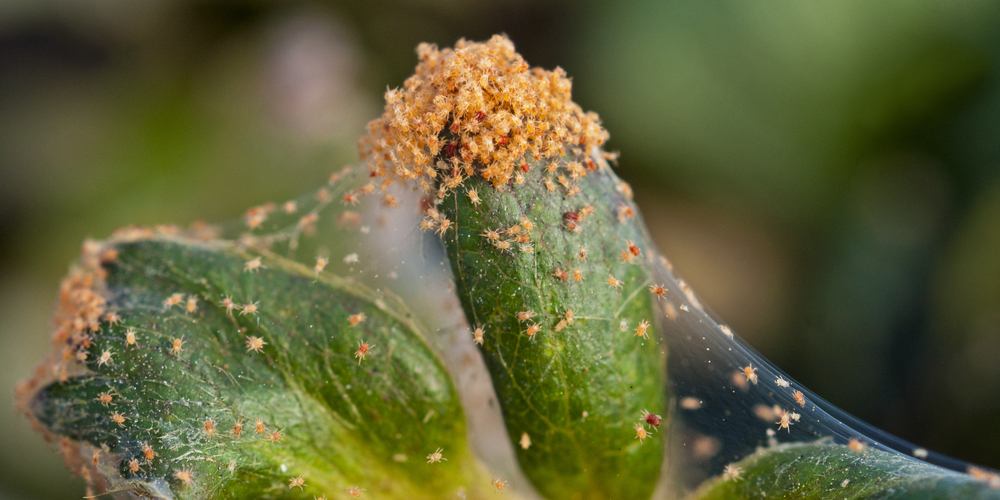Understanding the Brugmansia Plant
Brugmansia Vs Datura
Brugmansia and Datura are often confused with each other due to their similar appearance. However, there are some key differences between the two plants. Brugmansia is a tree-like plant that can grow up to 30 feet tall, while Datura is a herbaceous plant that grows up to 5 feet tall. Brugmansia flowers hang down, while Datura flowers point upwards. Additionally, Brugmansia has woody stems, while Datura has soft stems.
But perhaps the most important difference between the two plants is their toxicity. Brugmansia contains tropane alkaloids, which can cause hallucinations and delirium when ingested. Datura also contains tropane alkaloids, but in higher concentrations, making it more toxic than Brugmansia. Therefore, it is important to be able to distinguish between the two plants to avoid accidental ingestion of Datura.
Species of Brugmansia
There are seven known species of Brugmansia, all of which are native to South America. Each species has its own unique characteristics, such as flower color and size, and growth habits. The seven species are:
- Brugmansia arborea
- Brugmansia aurea
- Brugmansia insignis
- Brugmansia sanguinea
- Brugmansia suaveolens
- Brugmansia versicolor
- Brugmansia vulcanicola
Brugmansia in South America
Brugmansia is native to the Andes Mountains of South America, where it has been used for medicinal and religious purposes for centuries. In traditional medicine, Brugmansia has been used to treat a variety of ailments, including arthritis, asthma, and fever. In religious ceremonies, Brugmansia has been used as a hallucinogen to induce visions and communicate with the spirit world.
Today, Brugmansia is grown all over the world as an ornamental plant, prized for its large, fragrant flowers. However, it is important to remember that Brugmansia is still a powerful hallucinogen and should be treated with respect and caution. If you are interested in growing Brugmansia from seed, be sure to research the proper growing conditions and take appropriate safety precautions.
Starting Brugmansia from Seed
If you are interested in growing Brugmansia from seed, it is important to understand the germination process. This section will cover the basics of starting Brugmansia from seed, including indoor and outdoor germination methods.
Germination of Brugmansia Seed
Brugmansia seeds can be challenging to germinate due to their hard seed coat. However, with the right conditions, you can achieve a high germination rate. Brugmansia seeds require moisture, humidity, and warmth to germinate successfully.
Indoor Germination
Indoor germination is the most common method for starting Brugmansia from seed. To germinate Brugmansia seeds indoors, follow these steps:
- Soak the seeds in warm water for 24 hours.
- Fill a seed tray with a mixture of vermiculite and peat.
- Place the seeds on the surface of the soil mixture.
- Cover the seeds with a thin layer of soil mixture.
- Water the soil mixture until it is moist.
- Cover the seed tray with plastic wrap to retain moisture.
- Place the seed tray on a heat mat set to 70-75°F.
- Keep the soil mixture moist but not wet.
- Germination should occur within 2-4 weeks.
Outdoor Germination
Outdoor germination can also be successful if the weather conditions are right. To germinate Brugmansia seeds outdoors, follow these steps:
- Choose a well-draining location with partial shade.
- Prepare the soil by loosening it to a depth of 4-6 inches.
- Mix in a slow-release fertilizer.
- Plant the seeds 1/8 inch deep in the soil.
- Water the soil until it is moist.
- Cover the soil with a layer of mulch to retain moisture.
- Keep the soil moist but not wet.
- Germination should occur within 2-4 weeks.
Remember that Brugmansia seeds require consistent moisture, humidity, and warmth to germinate successfully. By following these steps, you can increase your chances of a successful germination and grow beautiful Brugmansia plants from seed.
Related:
Caring for Brugmansia Seedlings
If you have recently grown Brugmansia from seed, congratulations! Brugmansia seedlings require special care to ensure they grow healthy and strong. In this section, we will go over the basics of caring for your Brugmansia seedlings.
Watering and Fertilizing
When it comes to watering Brugmansia seedlings, it is important to keep the soil moist but not waterlogged. Overwatering can cause root rot, which can be fatal to your seedlings. It is recommended to water your seedlings when the top inch of soil feels dry to the touch.
Fertilizing your Brugmansia seedlings is also important. A water-soluble fertilizer can be added to the soil every two weeks during the growing season. Be sure to follow the instructions on the fertilizer package to avoid over-fertilizing, which can also harm your seedlings.
Potting and Repotting
Brugmansia seedlings should be planted in an individual container with drainage holes to ensure proper drainage. A well-draining potting mix is recommended to prevent water from collecting around the roots.
As your seedlings grow, they may need to be repotted into a larger container. This should be done when the roots begin to outgrow the current container. When repotting, be sure to use a potting mix that is appropriate for Brugmansia and has good drainage.
Air Circulation and Sunlight
Brugmansia seedlings require good air circulation and full sunlight to grow properly. Be sure to place your seedlings in a location that receives at least six hours of sunlight per day. If growing indoors, consider using grow lights to supplement natural light.
It is also important to provide good air circulation to prevent fungal growth and other plant diseases. A fan can be used to provide gentle air movement around your seedlings.
In conclusion, caring for Brugmansia seedlings requires attention to watering, fertilizing, potting, and providing proper air circulation and sunlight. With the right care, your Brugmansia seedlings will grow into beautiful and healthy plants.
Growing Brugmansia Plants
If you’re interested in growing Brugmansia plants from seed, there are a few things you should know to ensure your success. Here are some tips to help you grow healthy and beautiful Brugmansia plants.
Indoor vs Outdoor Growth
Brugmansia plants can be grown both indoors and outdoors. If you live in a colder climate, it’s best to grow them indoors during the winter months. However, if you live in a warm climate, you can grow them outdoors year-round.
When growing Brugmansia plants indoors, make sure they receive plenty of bright, indirect light. You can also use grow lights to supplement their light needs. Keep the soil moist but not waterlogged, and fertilize with a balanced fertilizer every two weeks.
If growing Brugmansia plants outdoors, plant them in a location that receives partial shade. They prefer well-draining soil that is kept consistently moist. Fertilize with a balanced fertilizer every two weeks during the growing season.
Winter Care
If you live in a colder climate and plan on overwintering your Brugmansia plants, it’s important to take proper care of them during the winter months.
Before the first frost, prune your Brugmansia plants back to about half their size. Move them indoors to a cool, dark location, such as a basement or garage. Water them sparingly, just enough to keep the soil from completely drying out.
In the spring, move your Brugmansia plants back outdoors and resume regular watering and fertilizing.
Pruning and Trimming
Pruning and trimming your Brugmansia plants is important for maintaining their shape and promoting healthy growth.
Prune your Brugmansia plants in the late winter or early spring before new growth appears. Remove any dead or diseased branches, as well as any branches that are crossing or rubbing against each other.
Trim your Brugmansia plants throughout the growing season to remove any spent flowers or damaged leaves. This will encourage new growth and promote a fuller, bushier plant.
By following these tips for growing Brugmansia plants, you can enjoy the beauty and fragrance of these fast-growing, small trees on your patio or in your garden.
Dealing with Pests and Diseases
As with any plant, pests and diseases can be a problem for your Brugmansia. Here are some common issues you may encounter and how to deal with them.
Common Insects
Brugmansia can attract a variety of insects, including spider mites, aphids, snails, slugs, fungus gnats, and white flies. Here are some ways to deal with these pests:
- Spider mites: These tiny insects can be controlled with a spray of water or by using insecticidal soap.
- Aphids: These small insects can be controlled with a spray of water or by using neem oil.
- Snails and slugs: These pests can be controlled by placing a plastic bag filled with beer near the base of the plant. The snails and slugs will be attracted to the beer and will drown.
- Fungus gnats: These pests can be controlled by keeping the soil surface dry and using a soil drench of Bacillus thuringiensis (BT).
Fungus and Diseases
Brugmansia can also be susceptible to various fungal diseases, such as root rot and powdery mildew. Here are some ways to deal with these issues:
- Root rot: This can be caused by over-watering and a moist environment. To prevent root rot, allow the soil to dry out between waterings and ensure good drainage.
- Powdery mildew: This can be controlled by using a fungicide or by spraying with a mixture of water and baking soda.
Toxicity of Brugmansia
It is important to note that Brugmansia is a toxic plant. All parts of the plant contain toxic alkaloids, which can cause hallucinations, seizures, and even death if ingested. It is important to keep the plant out of reach of children and pets, and to wear gloves when handling the plant. If you suspect that someone has ingested any part of the plant, seek medical attention immediately.
By following these tips, you can help keep your Brugmansia healthy and thriving.
Propagating Brugmansia
If you’re interested in growing Brugmansia, you’ll be pleased to know that it’s relatively easy to propagate. There are two main methods for propagating Brugmansia: from cuttings and from seeds.
From Cuttings
The best time to take softwood cuttings is in the spring or early summer. Cuttings taken later in the season may not root as easily. When selecting a cutting, look for a healthy, young shoot that has at least two nodes. Nodes are the points on the stem where leaves emerge.
To take a cutting, use a sharp, clean pair of scissors or pruning shears to make a clean cut just below a node. Remove the lower leaves from the cutting, leaving only a few at the top. Dip the cut end of the cutting in rooting hormone and plant it in a well-draining potting mix.
Keep the cutting moist and in a warm, bright location. After a few weeks, the cutting should start to form roots. Once the roots have formed, you can transplant the cutting into a larger pot or into your garden.
From Seeds
To propagate Brugmansia from seeds, you’ll need to start by collecting the seeds from a mature plant. Brugmansia seeds are relatively large and can be easily collected by shaking the seed pods over a container.
Once you have collected the seeds, it’s important to soak them in water for 24 hours before planting. This will help to soften the seed coat and improve germination rates.
Plant the seeds in a well-draining potting mix and keep them moist and in a warm, bright location. Germination can take anywhere from a few days to a few weeks.
Once the seedlings have emerged, you can transplant them into individual pots. It’s important to keep the soil moist and to provide the seedlings with plenty of light.
In conclusion, propagating Brugmansia can be a fun and rewarding experience. Whether you choose to propagate from cuttings or from seeds, with a little bit of patience and care, you’ll soon have a beautiful new Brugmansia plant to enjoy.
Buying Brugmansia
If you’re looking to grow Brugmansia from seed, you have a few options for purchasing them. In this section, we’ll cover two main options: buying Brugmansia seeds from a garden center, and purchasing them online.
From Garden Center
Your local garden center may carry Brugmansia seeds, which can be a great option if you want to see the seeds in person before purchasing them. Here are a few things to keep in mind when buying Brugmansia seeds from a garden center:
- Check the packaging: Make sure the seeds are labeled as Brugmansia and that the packaging looks professional and well-sealed. If the packaging looks old or damaged, the seeds may not be viable.
- Check the expiration date: Seeds can lose viability over time, so make sure the seeds you’re purchasing have a recent expiration date.
- Ask for advice: If you’re new to growing Brugmansia, don’t be afraid to ask the staff at the garden center for advice on growing and caring for the plant.
Online Purchase
If you can’t find Brugmansia seeds at your local garden center, or if you prefer the convenience of shopping online, there are many reputable online seed vendors that carry Brugmansia seeds. Here are a few things to keep in mind when purchasing Brugmansia seeds online:
- Research the seller: Make sure the seller is reputable and has good reviews from other customers. Look for a seller that specializes in rare or exotic seeds, as they are more likely to have high-quality Brugmansia seeds.
- Check the shipping policies: Make sure the seller ships to your location and that the shipping time and cost are reasonable.
- Check the return policy: If the seeds arrive damaged or don’t germinate, make sure you can return them for a refund or replacement.
Whether you choose to buy Brugmansia seeds from a garden center or online, make sure you follow the instructions carefully for planting and caring for the seeds to ensure the best chance of success. With a little patience and care, you can grow beautiful Brugmansia plants from seed.
Frequently Asked Questions
How to plant angel trumpet seeds?
Planting angel trumpet seeds is a simple process. First, choose a well-draining potting mix and a container with drainage holes. Fill the container with the potting mix and water it thoroughly. Then, plant the seeds about 1/4 inch deep and cover them with a thin layer of soil. Keep the soil moist but not waterlogged and place the container in a warm, bright location.
Are Brugmansia easy to grow from seed?
While growing Brugmansia from seed can be challenging, it is possible with the right conditions. Brugmansia seeds require warm temperatures and high humidity to germinate. Once the seeds have sprouted, the seedlings need bright light and consistent moisture to grow.
How do you germinate Brugmansia?
To germinate Brugmansia seeds, start by soaking them in warm water for 24 hours. Then, place the seeds in a plastic bag with a moist paper towel and seal it. Keep the bag in a warm, bright location and check it daily for signs of sprouting. Once the seeds have sprouted, plant them in a well-draining potting mix.
How long does it take to grow Brugmansia from seed?
It can take several months for Brugmansia seeds to germinate and grow into mature plants. The length of time depends on several factors, including temperature, humidity, and light. With optimal conditions, Brugmansia can grow up to several feet tall in a single growing season.
What are the different types of Brugmansia?
There are several different types of Brugmansia, including B. arborea, B. aurea, B. sanguinea, B. versicolor, and B. x candida. Each type has unique characteristics, such as flower color, size, and shape.
Can Angel Trumpet seeds be poisonous?
Yes, all parts of the Brugmansia plant, including the seeds, are poisonous if ingested. It is important to handle the seeds with care and keep them out of reach of children and pets. Wear gloves when handling the seeds and wash your hands thoroughly after planting them.



